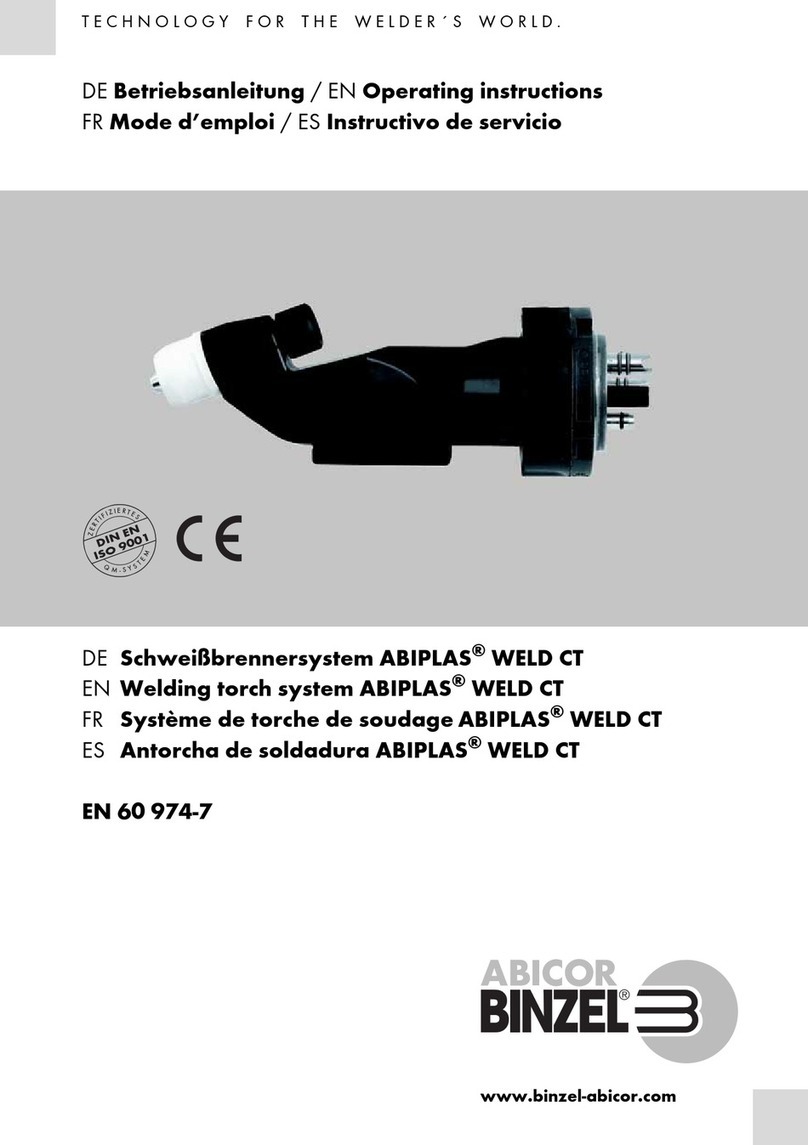
DE - 3
Schweißbrenner B 1 Bestimmungsgemäße Verwendung
1 Bestimmungsgemäße Verwendung
Die MIG/MAG Handschweißbrenner werden zum sicheren Schweißen von
niedrig- und hochlegierten Werkstoffen eingesetzt. Sie bestehen aus dem
Brennerhals mit Ausrüst- und Verschleißteilen, Handgriff oder Griffrohr und
Schlauchpaket mit Zentralstecker. Sie entsprechen der EN 60 974-7 und stellen
kein Gerät mit eigener Funktionserfüllung dar. Das Lichtbogenschweißen wird
erst in Verbindung mit der Schweißstromquelle möglich.
2 Technische Daten
Transport und Lagerung - 25 °C bis + 55°C
Relative Luftfeuchtigkeit bis 90 % bei 20 °C
Tab. 1 Umgebungsbedingungen im Betrieb
Spannungsart DC
Polung der Elektroden bei DC in der Regel positiv
Schutzgas (DIN EN 439) CO2 und Mischgas M21
Drahtarten handelsübliche Runddrähte
Spannungsbemessung 113 V Scheitelwert
Schutzart der maschinenseitigen Anschlüsse (EN 60 529) IP3X
Tab. 2 Allgemeine Brennerdaten (EN 60 974-7)
Typ Kühl-
art
Belastung ED Draht- Gasdurch-
fluss
Angaben zur Kühlung
Vorlauf-
temp.
Durch-
fluss
Fließdruck
CO2M21 max. min. min. max.
A A % mm l/min °C l/min bar bar
B 15 luft 180 150 60 0,6 - 1,0 10 - 18
B 24 luft 250 220 35 0.8 - 1.2 10 - 18
B 25 luft 230 200 60 0,8 - 1,2 10 - 18
B 36 luft 300 270 60 0,8 - 1,2 10 - 20
B 501 D flüssig 500 450 100 1,0 - 1,6 10 - 20 40 1 2,5 3,5
Tab. 3 Produktspezifische Brennerdaten (EN 60 974-7)
























